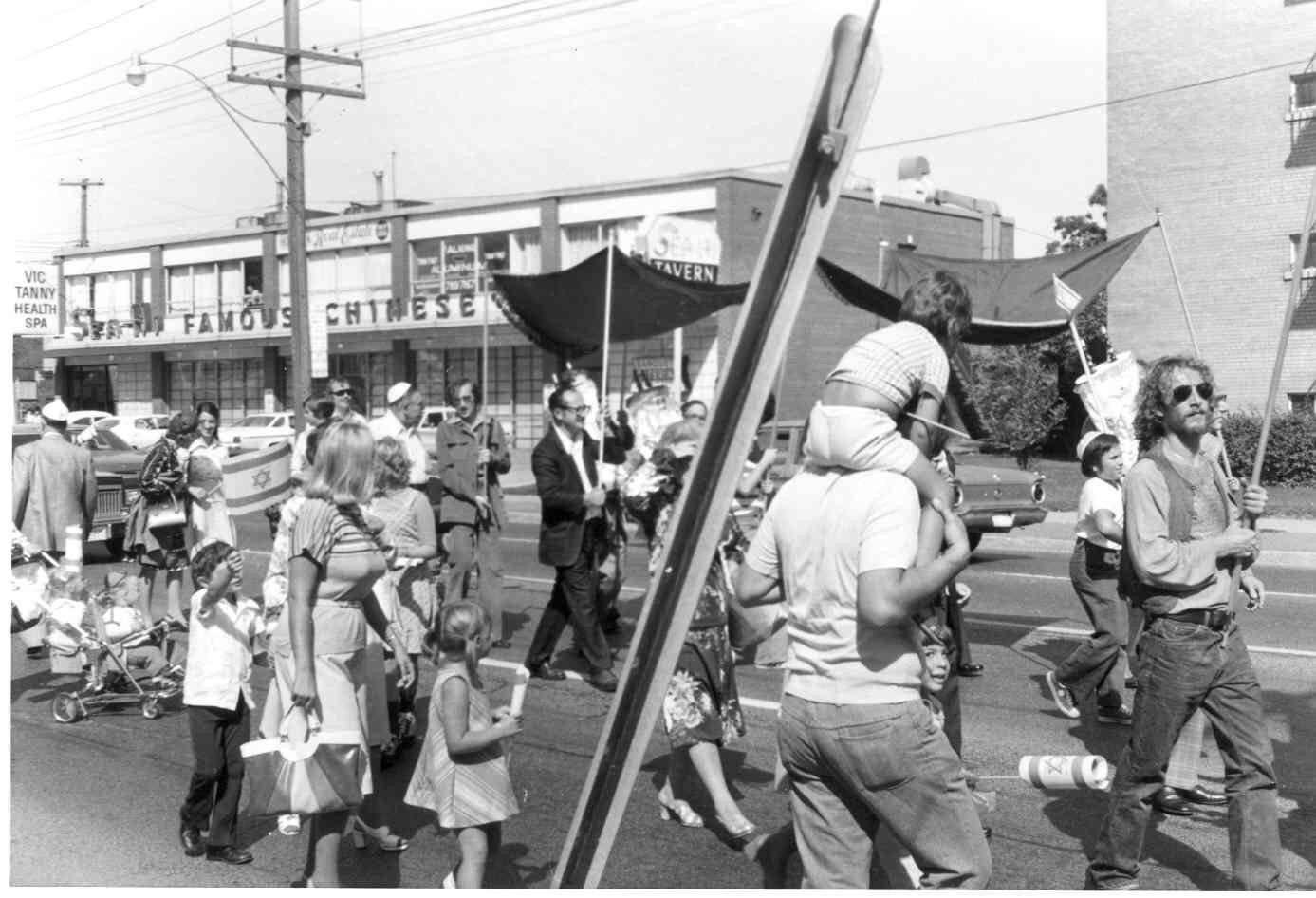Ledbury Park History
The area was settled by farmers in the 19th century and remained farmland until the early 1900’s when the first houses in this neighbourhood were built along Bedford Park and Woburn Avenues, on the site of the old Lawrence farm.
In 1918, most of the land was owned by real estate developers, who began to sell lots on the site. The Ledbury area, north of Woburn Avenue, had been the former hobby farm of Alfred St. Germaine, the successful publisher of the old Toronto Evening Journal. The St. Germain property was subdivided in 1922 by the Melrose Realty Company under the name Melrose Park. Lawyer-developer and President of Melrose Realty Company, Herbert Abraham Clark, named a number of the new streets, such as Marmion, Deloraine, Melrose and Falkirk, after the works of Sir Walter Scott of whom Clark was an avid fan. St. Germain was chosen for obvious reasons, while Old Orchard Grove recalls the St. Germain apple orchard.
It was not until after the Second World War that most of the area was developed. The area was filled with small post-war bungalows and became a middle-class suburban area. Ledbury’s residential development was not fully complete until the 1950’s when Ledbury Park and Ledbury School were added to the community signifying the completion of the development.
The character of the neighbourhood began to change rapidly beginning in the 1990s as many of the small bungalows in this middle-class, suburban area were torn down and replaced with larger upscale homes.
Today Ledbury Park is considered a centrally located, upscale neighbourhood known for its plethora of fine custom homes which dwarf the few remaining bungalows existing from the original housing stock. Ledbury Park has everything you would want in a premiere neighbourhood including an elementary and junior school, close proximity to medical offices and hospitals, places of worship, nice parks, beautiful homes, convenient access to a wonderful shopping district on Avenue Road, and easy access to public transit and major highways.
Avenue Road
Odd name, Avenue Road. Right from the Department of Redundancy Department. Urban legend has it that an early team of surveyors was working its way along what’s now Bloor Street. When the team of Scottish men got to where the road is located today, the leader said: “Let’s ‘ave a new road here.”
In truth we don’t know how the name came to be but it is quite likely that it has to do with British usage conflating avenue with tree-lined street, a description that matches the thoroughfare in its earliest iteration as an extension of University Avenue.
Below is a bit of history on a few local landmarks:
Pusateri’s
Pusateri’s, just north of Lawrence, is among Avenue Road’s landmark shops. Salvatore Pusateri immigrated to Toronto from Sicily, Italy, in 1958 and worked at the Ontario Food Terminal, saving whatever he could to open his own fruit and vegetable store on St. Clair Ave. W. in 1963 where he lived above the shop with his wife and children. As the business prospered, son Cosmo took over the family grocery store in 1986 and, that same year, moved to its present location on Avenue Rd. which became the flagship of a multi-store operation offering the finest in food.
Glendale Theatre
The Glendale Theatre was located at 1661 Avenue Road, site of the present day Nisan dealership. It opened in late-December 1947 and featured a large parking lot which was rare at the time. The Glendale contained a luxurious lobby and seating for almost 1000 patrons, with 582 seats in the auditorium and another 413 in the balcony.
A confection booth was incorporated into the lobby for the opening, but no popcorn was allowed because of the hale and expense of cleaning it after shows. However, when vendors began selling popcorn from stands outside the theatres, the theatre owners relented.
The Glendale remained a popular suburban theatre for many decades.
The wide-screen format, Cinerama, was introduced in Toronto at the University Theatre, was last seen, in the city, at the Glendale. However, as theatre attendance declined and the property values on Avenue Road skyrocketed, the theatre was eventually sold. The last film to be screened was in 1974—the Godfather, Part Two.
For more information and photos visit https://tayloronhistory.com/2013/12/15/torontos-old-movie-theatresthe-glendale-theatre-on-avenue-rd/
Lawrence Plaza
Toronto’s First Suburban Shopping Centre opened on October 29, 1953 with a cannon blast fired at the northwest corner of Lawrence and Bathurst streets. It marked the official opening of Lawrence Plaza.
What had been a cow pasture now had 40 new retail shops, offices on the second floor, a 300-seat restaurant, and a massive parking lot with lighting. It was considered a super-colossus for its time and became a destination shopping centre. Lawrence Plaza was a relatively new type of shopping centre where customers could park near the store to which they were headed.
Anticipatory crowds were forming in the early morning, waiting for stores offering giveaways to open. By noon, 3,000-pound bags of coffee, 1,500 cups and saucers, and 2,000 packages of chocolate had been handed out and the parking lot was jammed. A pipe band paraded. “Speedboats,” a children’s amusement, spun in a circular pool of water.
In 1955, the Montreal-based Henry Morgan & Co. department store chain opened Toronto’s first suburban department store in the plaza. Morgan’s was bought by The Bay in 1960.
In October 1984, the famed Spadina eatery United Bakers Dairy Restaurant, moved in. The location could hardly have been a better fit. Lawrence Plaza had the added advantage of being situated right at the heart of Toronto’s Jewish community in the 1980’s. The same customers who had frequented the United downtown for decades could now join their families for lunch at the new United Bakers “Uptown”.
The stores have changed since that auspicious opening but the crowds are still there.
For more information and visit https://www.toronto.com/opinion-story/10228483-lawrence-plaza-toronto-s-first-suburban-shopping-centre-opened-in-1953/
SHAAREI TEFILLAH
In 1976, a procession in honour of the amalgamation of Shaarei Tefillah Congregation and Anshei Libavitch took place on Bathurst Street and concluded at Shaarei Tefillah, 3600 Bathurst Street.
Shaarrei Tefillah Congregation was one of the first orthodox congregations formed in the post Second Word War development of North York. The first shabbat service was held in June 1951 at the Reichman home located at 677 Lawrence Avenue. Some of the other temporary North York locations included the basement at 27 Ridgevale, Sam Samer’s Butcher Shop at 3325 Bathurst Street, and 102 Brookview Drive, the future home of Max Greenberg.
Torah procession in honour of amalgamation of Shaarei Tefillah and Anshei Libavitch, Sept. 1976. Ontario Jewish Archives
In the spring of 1955, services in the first phase of the present-day synagogue were conducted, and in 1962, the sanctuary was built. In September 1968, the congregation merged with Anshei Apt Congregation and in September, 1976, the congregation merged with Anshei Libavitch Congregation.
Sea-Hi Famous Chinese
The image in the previous feature is taken as the Orthodox Synagogue procession passes what was a landmark in the neigbourhood for 59 years - Sea-Hi Famous Chinese Food restaurant - until it closed in 2020 just prior to the Covid19 pandemic taking hold in Canada. Though it was a Chinese restaurant, it was known as a Jewish institution in North York with the non-kosher community often being the Chinese restaurant’s best patrons. The place was always full on Christmas. Former Toronto Mayor Mel Lastman was a regular, as was ex-finance minister Robert Caplan.
The restaurant was opened by Edna Chan in 1955 at Dundas and Bay Sts. and in 1961, she opened a second location — the current spot — at 3645 Bathurst St. and subsequently closed the Chinatown restaurant a year later. Stanley Chui purchased Sea-Hi in 1977 and the mid-century Chinese restaurant theme and neon sign remained in place until the end.
It was the backdrop for the documentary “Dreaming of a Jewish Christmas,” which had a cameo by Barenaked Ladies’ Steven Page. In 2017, the Colin Firth and Kevin Bacon film, “Where the Truth Lies,” was shot in the restaurant."
Bedford Glen Condos
Known as Bedford Glen Condos, the two-building complex at 1555 Avenue Road, a block north of Lawrence, was built in 1976 and despite the urban location, contains a hidden treasure of bridges, goldfish pond, waterfall and lush park-like greenery and trees. This quirky set of buildings earned a Canadian Architect Award in 1980 and Canadian Housing Design Council Award in 1983. Read more about it and see more photos in this blogTO article from May 4, 2022.









